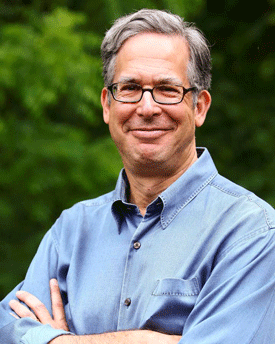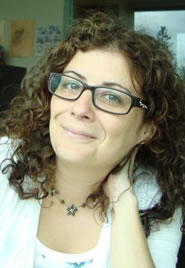Why stories matter: An interview with Andy Goodman (Part 1)

Andy Goodman, co-founder and director of The Goodman Center
Much of my role at the Nature Conservancy of Canada (NCC) involves searching for great stories about our work, and then either sharing them myself or helping others to share them with our friends and supporters. For many years, I've been following the work of Andy Goodman of the Goodman Center. Andy seemed to be a kindred spirit of sorts, as his work also focuses on the use of storytelling in the non-profit world.
Recently, I phoned Andy to chat about his work, why he thinks storytelling is important and how it can help non-profit organizations like NCC in our work. Below is Part One of our two-part interview (Part Two will follow next Friday):
CBT: How and when did you first become a storyteller?
AG: I’ve always been interested in storytelling. All human beings are inherently storytellers. It is how we evolved. In my personal life, my dream growing up was to write network sitcoms. I moved to Los Angeles in 1991 to pursue it. I got lucky and worked on television shows such as The Nanny and Dinosaurs. So I’ve been practising storytelling in one form or another for a long time
But when that work turned out not to be what I dreamed, I went to the not-for-profit world. And here were all these nice people with important stories to tell, but they were not very good at telling them. The juxtaposition was, in television I worked with people with the biggest megaphones in the world but there wasn’t much to say. But in the not-for-profit world, people had the most important things to say but didn’t know how to use their megaphone.
What I wanted to do in my career was to help people tell stories more effectively.
When I left television, I was first involved with the Environmental Media Association based in Los Angeles. The organization was designed to sit at the nexus of environmental communications and the entertainment industry. Our idea was to lobby television producers to put environmental messages in their storylines. We would help environmental groups reach out to the producers so you would see a movie or tv show discussing themes like global warming, modeling good behaviour and so on.
For example, we consulted with producers of The American President to insert factual information about global warming in the storyline.
I ran this non-profit for five years, then launched my own business, for which the Environmental Defence Fund was one of my earliest clients.
CBT: Why are stories important?
AG: Stories are how we communicate and think. Stories act as filters in our brains and everything we express passes through those filters.
There are many studies out there that show the impact of stories on our brains. Even as early as the 1980s, professor Richard Nisbett at the University of Michigan was literally testing the impact of stories versus data on study participants. The researchers found that the story influenced far more than data, even though study participants were rational people. The researchers found that one bad story was much more powerful than data that showed a very different picture.
Other studies show the same thing — we tend to react strongly to story.
CBT: How can stories help conservation organizations?
AG: The same thing holds true for conservation groups as with any not-for-profits I work with — stories help people remember. If have a set of facts want people to remember, they will remember much more if I tell them a story than if I just share a chart or graph.
Stories reach people an emotional level. If we take someone on an emotional journey with ups and downs, they’ll have an emotional response. When you have emotion in your body, it leaves markers in your brain.
We live in a world where our default response to data is to delete. There’s always so much coming at us — through email, tv, billboards, radio. What we’re doing more often than not is only paying attention to what matters. Stories reach us on a heart level. If you don’t care about something, it doesn’t get to the brain.
CBT: What makes a great story?
AG: A good story always has to have a challenge. If you’re telling someone a story, until you reach the point where “I want” runs into “You can’t,” you don’t have a story.
In fact, one of the mistakes in the non-profit world is that far too many stories are structured this way:
There was a problem. We went to solve it. We solved it. Give us money.
That just isn’t interesting. What’s interesting is when someone runs into a problem they can’t solve. Then the audience leans in and pays attention. Without the barriers and obstacles, that story is just not interesting.
The point of the barrier is not that it’s insurmountable; it’s interesting. In storytelling, we do have victories. The barriers keep it authentic and honest.
CBT: What’s the best story you’ve ever heard?
AG: I recommend The Story Handbook, published by the Trust for Public Land. It’s filled with conservation stories; stories that illustrate the basic connection human beings have with the land, whether they’re standing in middle of Yosemite or a little pocket park in the middle of New York City. This book captures the yearning we have for nature.
What I admire is that although a lot of what the Trust for Public Land does is very un-sexy (the "what" of what they do), the “why” is. And that handbook illustrates the "why."
CBT: Tune in next Friday for Part Two of my chat with Andy Goodman!


